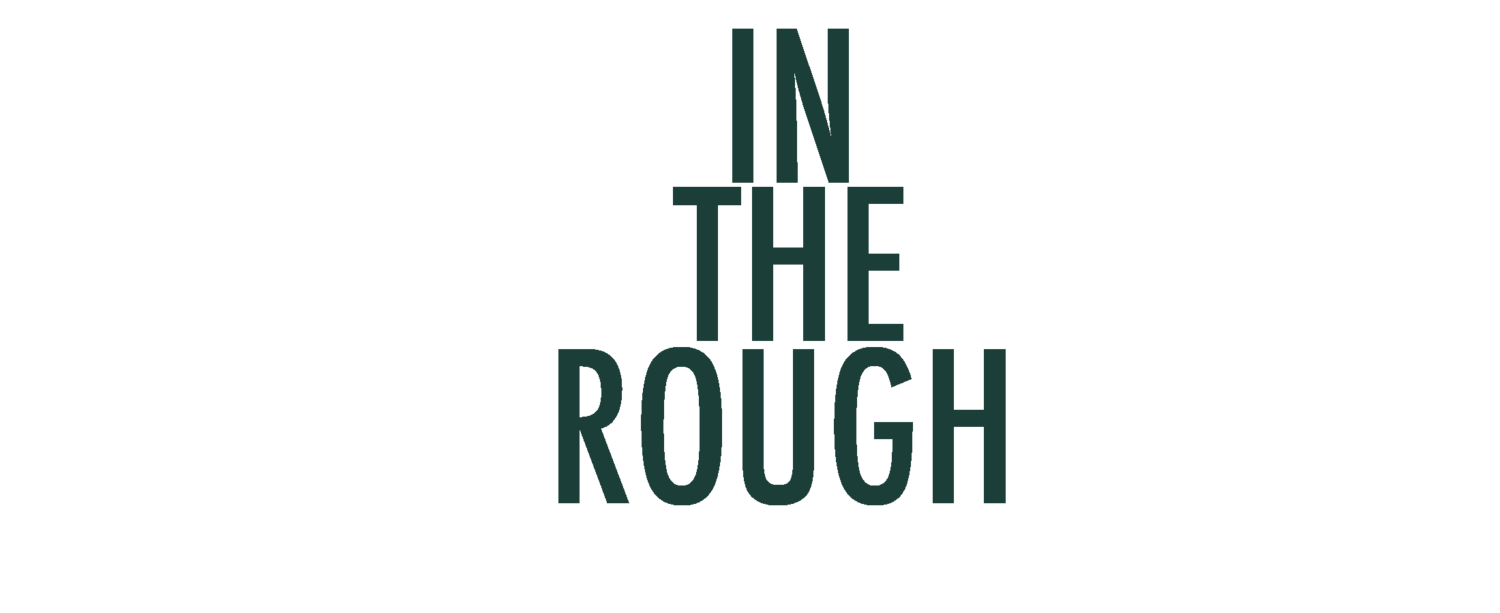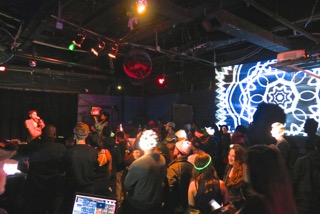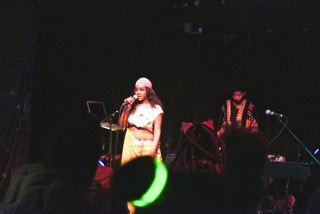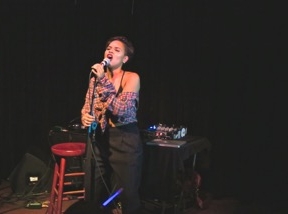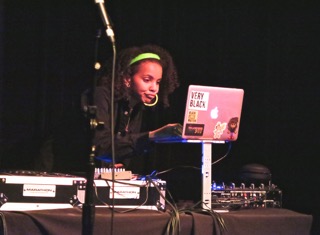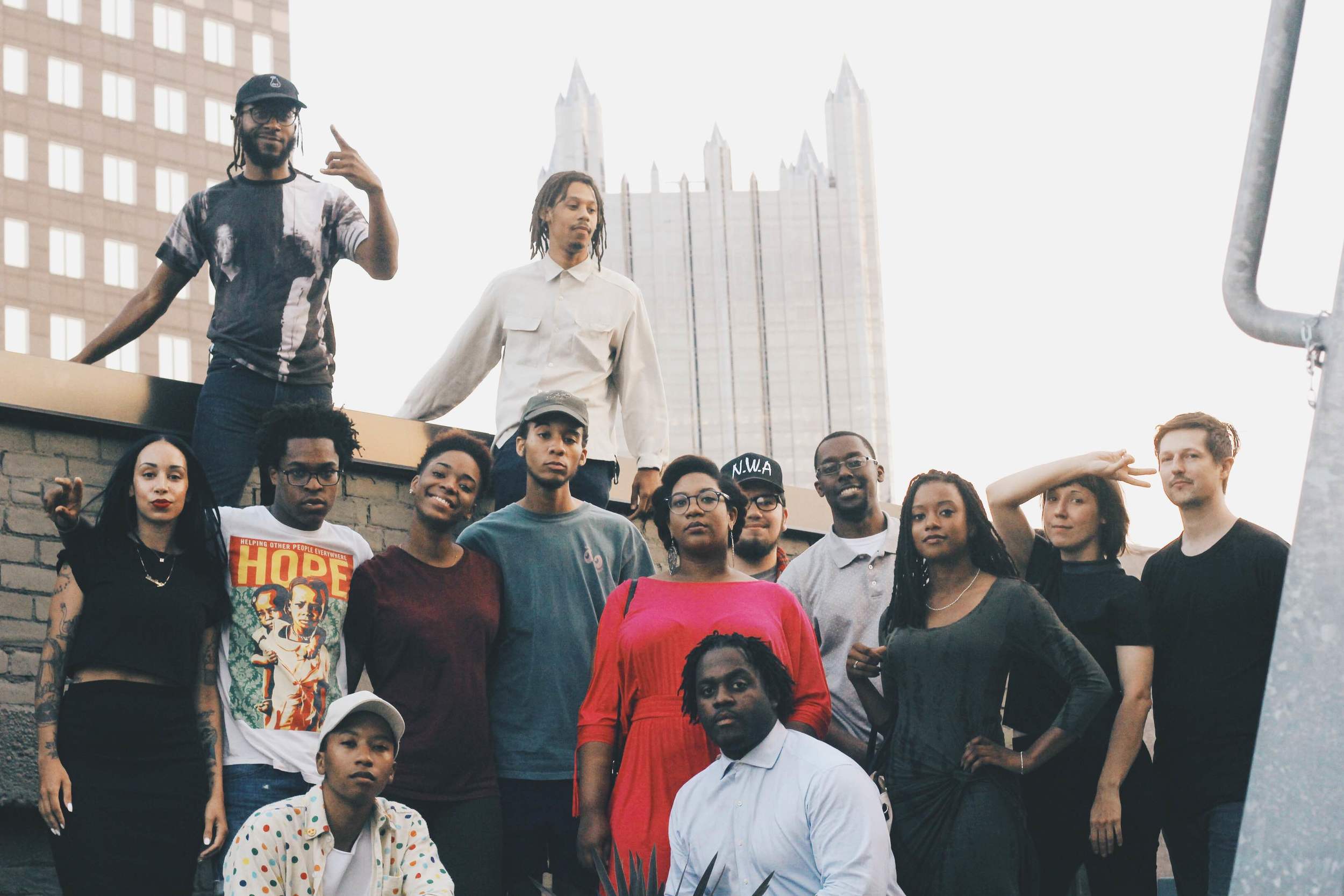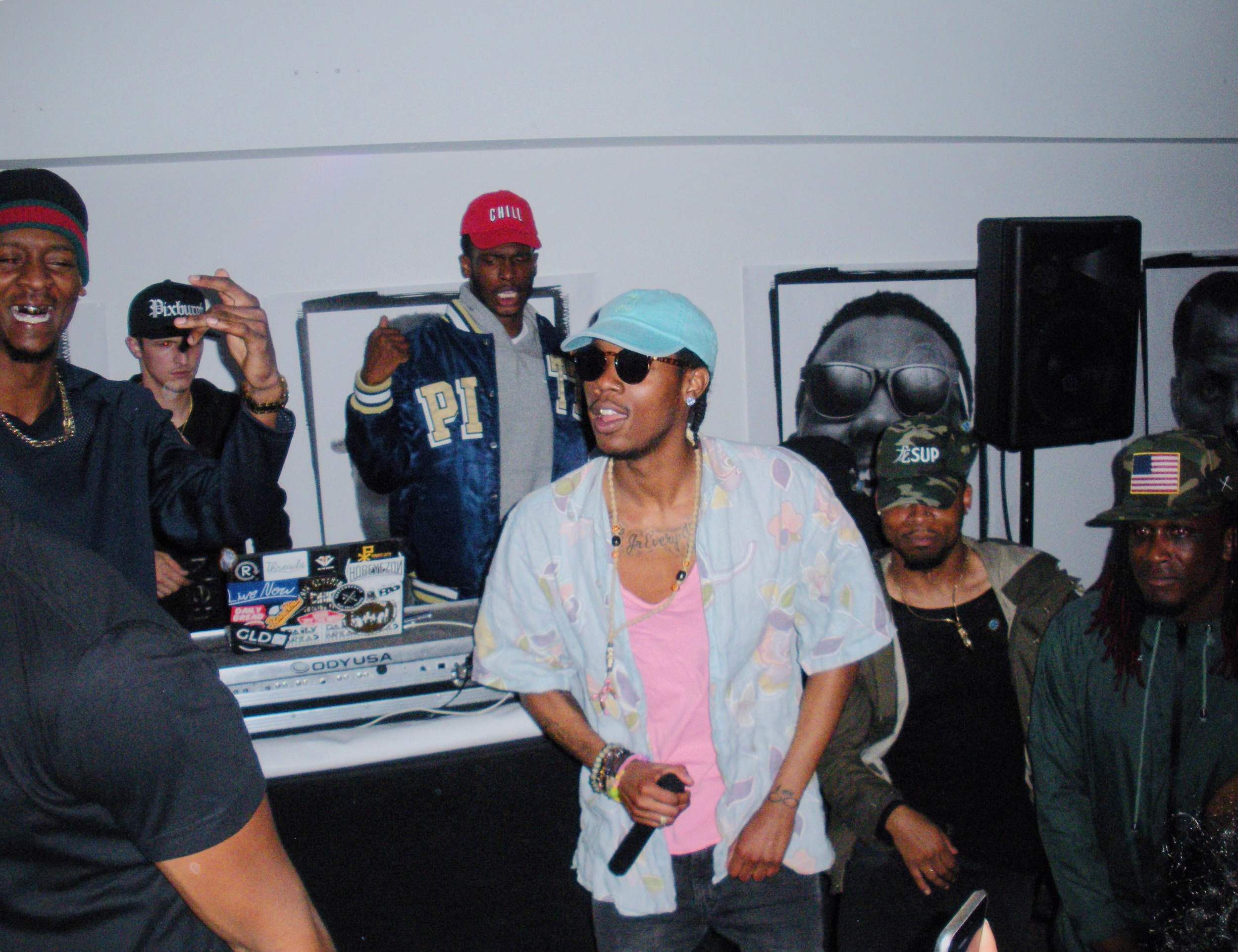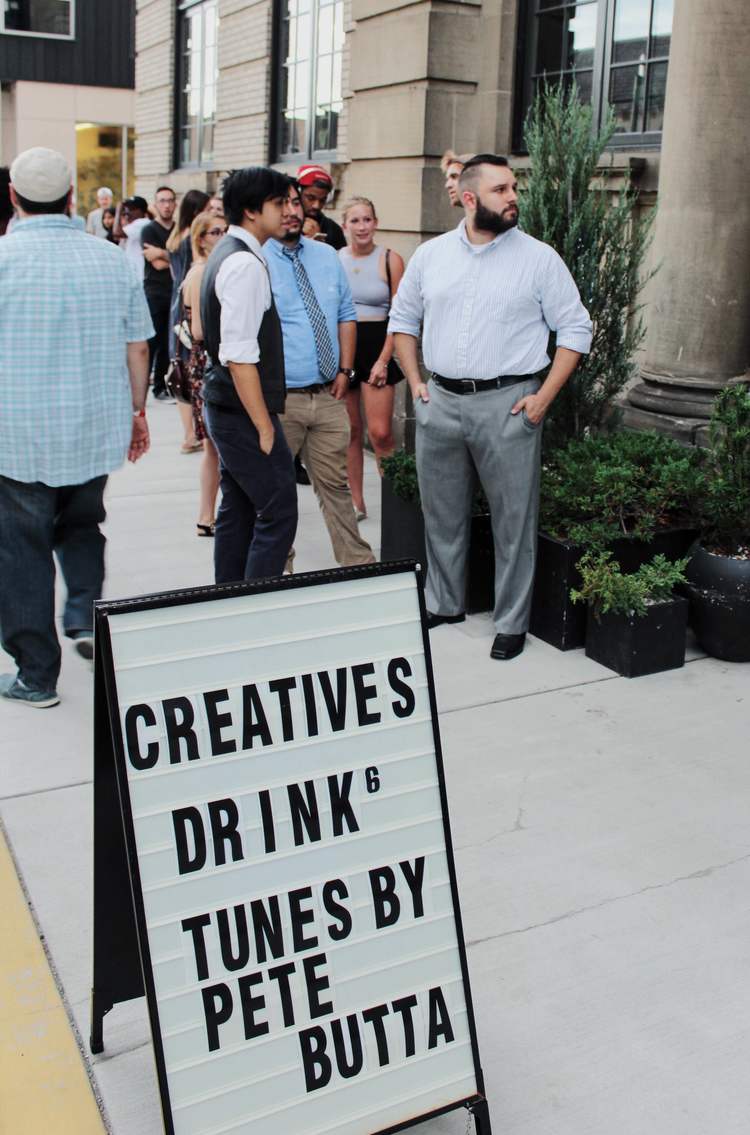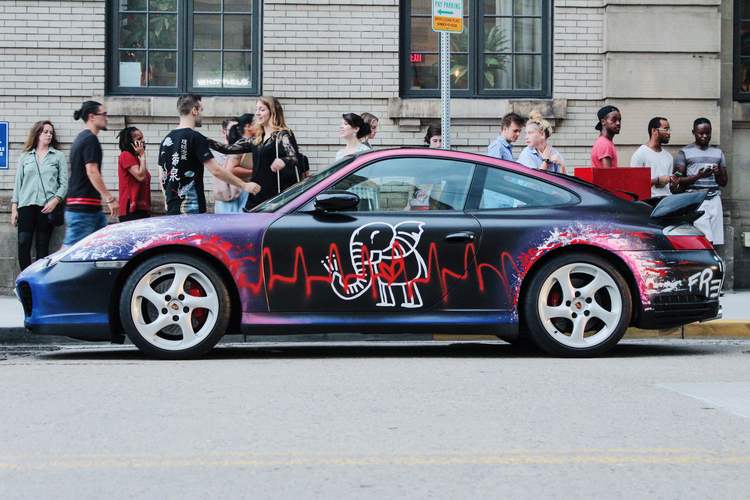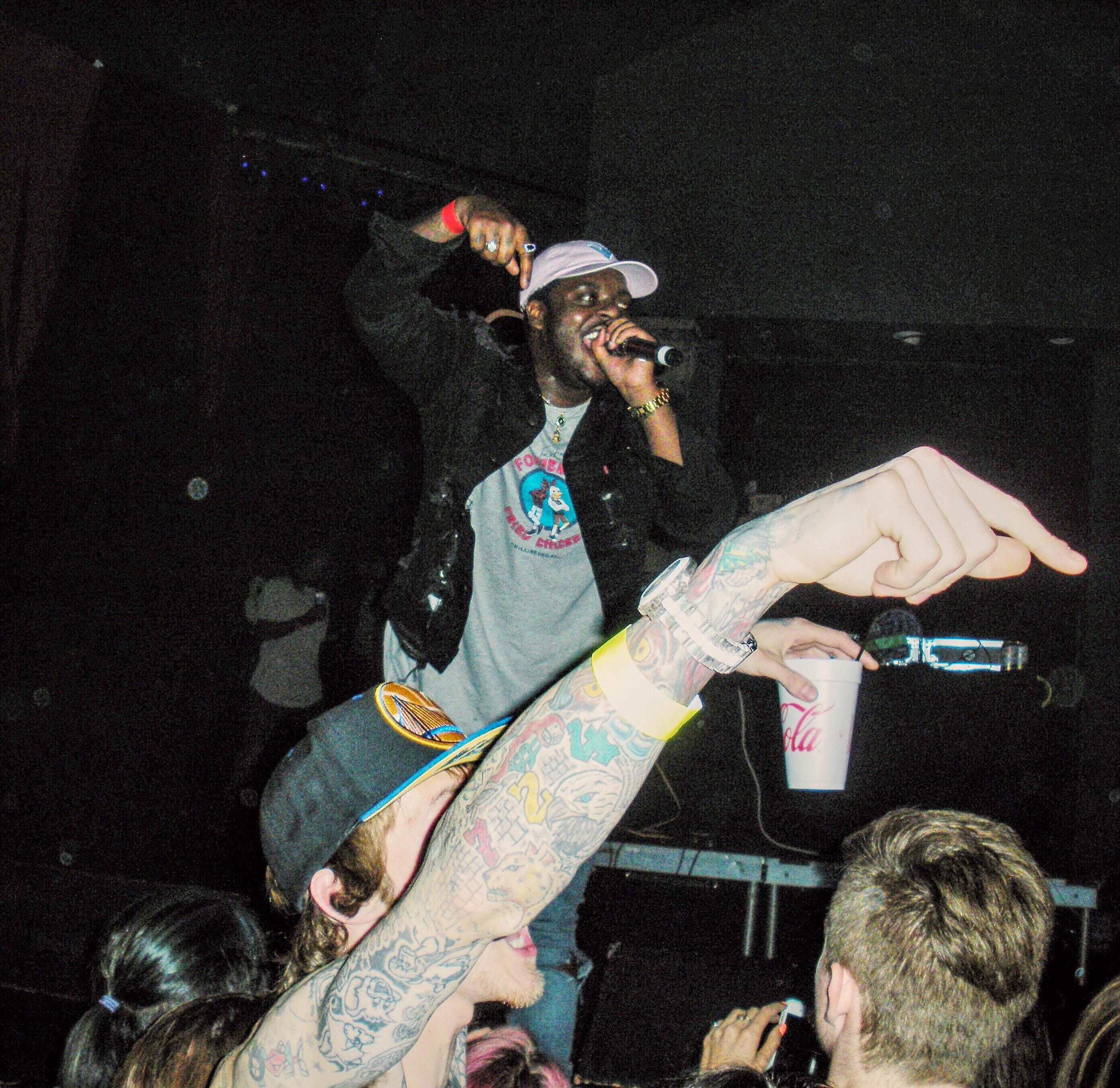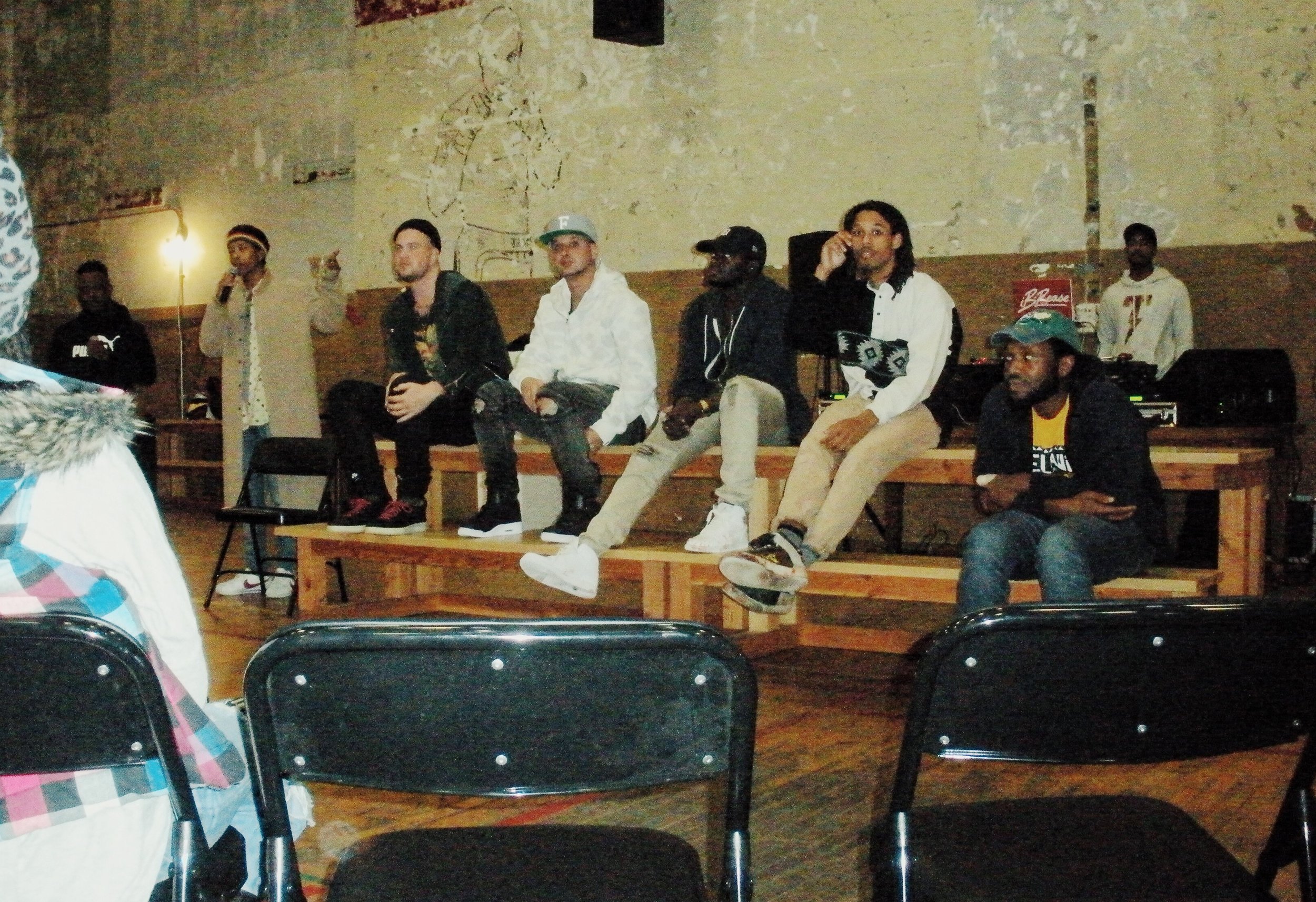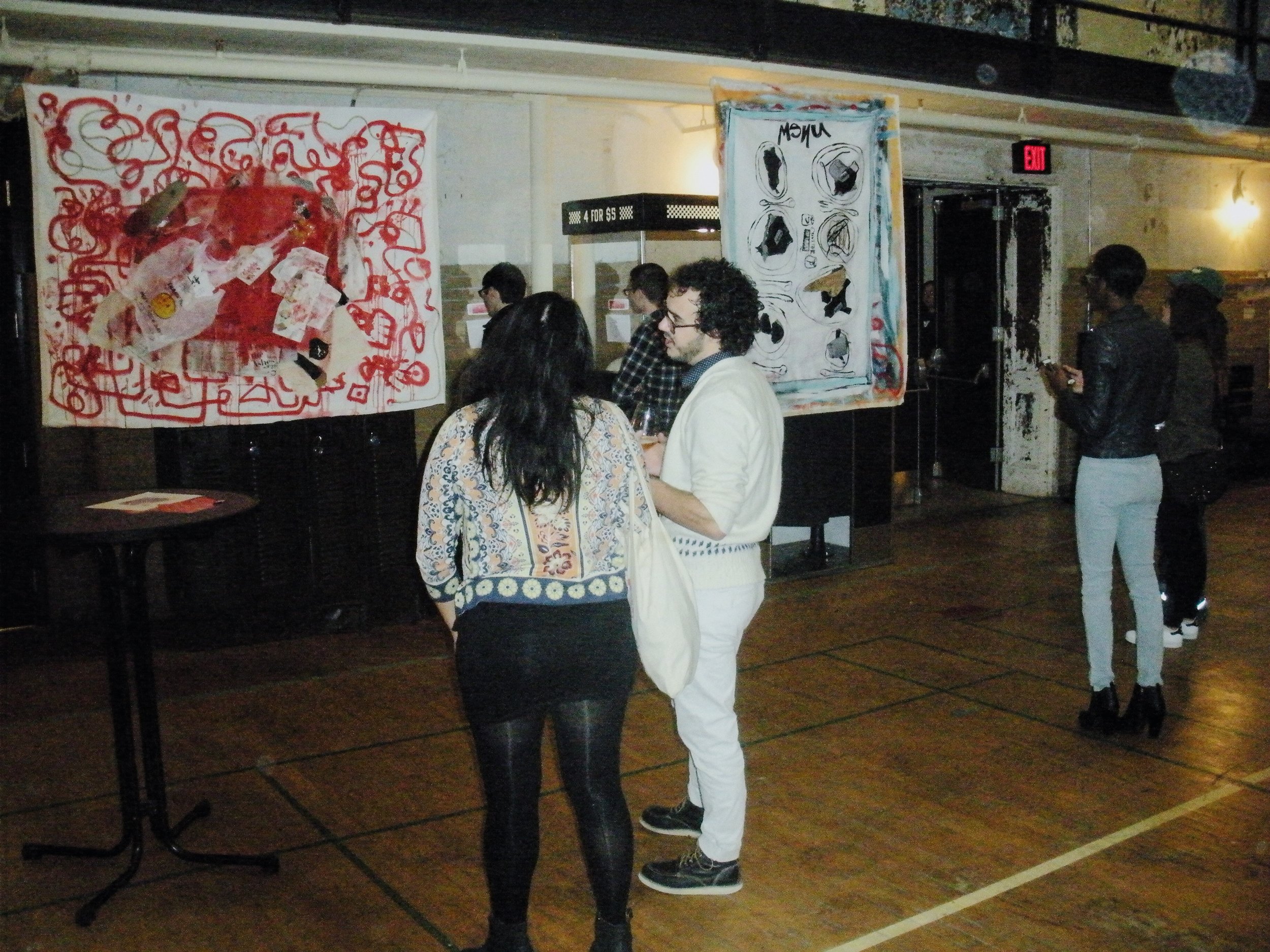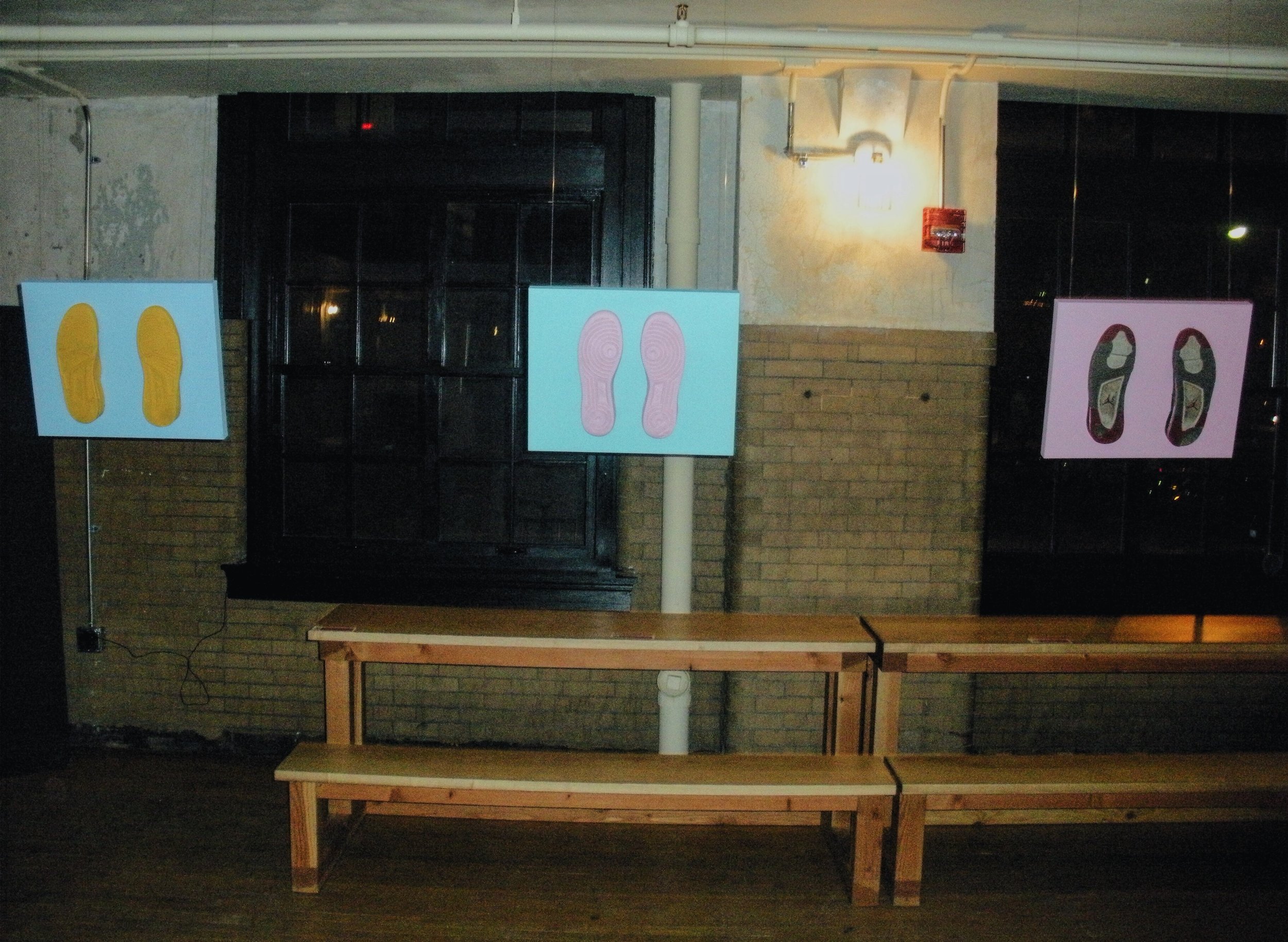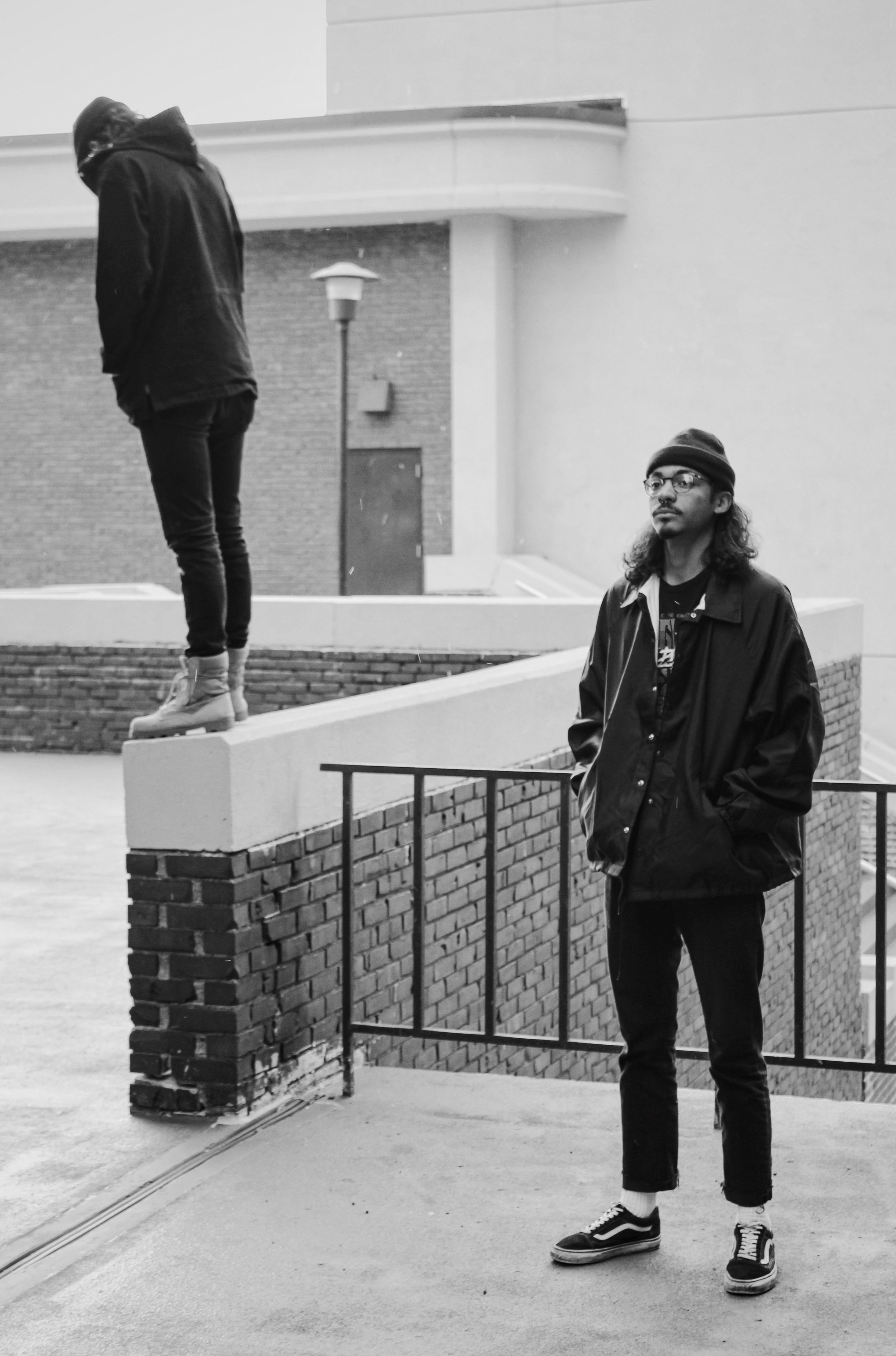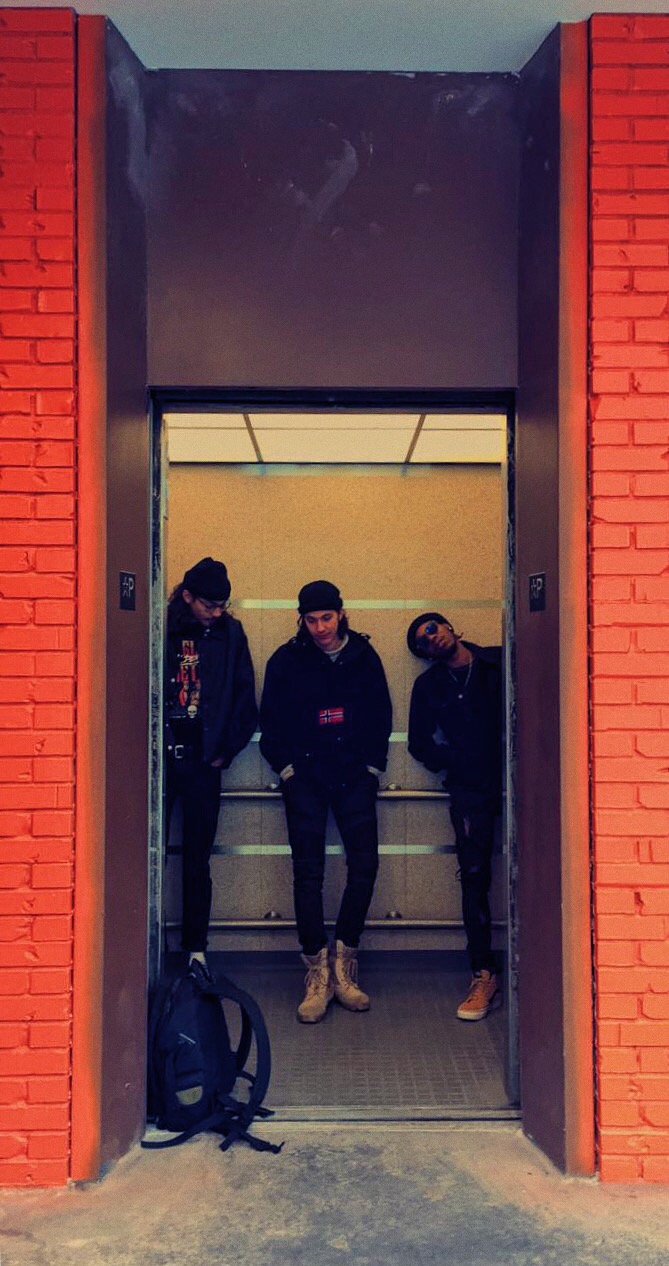Lyon - photograph by Alex Young
"Atlanta, the city of the trap." 'Trap' references drug trafficking and a sub-genre of hip-hop.
Lyon a 23-year-old Atlanta native, and musician describes the city to me this way because he represents one of the alternate sounds that resonates from the A's music community. Lyon's rap is intentional poetry that offers soul and a change of pace to a city where there is more to talk about than fast drug lifestyles and strippers.
Listen, though, there is a sexy and luxurious coolness to urban life in the Southern city. When you hear and watch "Bad and Boujee" by Migos, a rap group from Gwinnett county north of Atlanta, understand new money is in the hands of thousands of people who worked hard to establish their success. Childish Gambino's hit show "Atlanta" theatrically displays the vibrancy and regularity of the city's cultures.
Still, Lyon is not sold on the glamor. He describes Atlanta's progressivity as "bittersweet" because black excellence runs rampant and so does the disenfranchisement of Atlanta's black people. Issues like gentrification take advantage of black people and have taken precedence since the construction of the new Mercedes-Benz Stadium.
But, what makes Atlanta rich are the opportunities available to people of color. Black people encourage each other in Atlanta and the communities support a diverse group of inhabitants.
"It's a melting pot here now. You get different tastes from everywhere," Lyon says.
People are able to thrive and make Atlanta a place where both white people and people of color coexist fairly. Southern hospitality welcomes everybody and keeps the Georgia city humming.
Additionally, the rising success in Atlanta is an inspiration, and music is a definite area that ATLiens find success in.
Atlanta's musical heritage has roots in the church, Civil Rights movements, and the streets that run the clubs. ATLiens and Rappers Outkast, Gucci Mane, and T.I. speak to the different lifestyles that reflect through songs in hip-hop. Likewise Lyon represents the breadth of tastes amongst the new talents in the city.
Lyon's personification precedes him when we talk on a Sunday afternoon at Ponce City Market, an ex-department store built in 1926 that now functions with restaurants and commercial shops. I understand his style upon the previous discovery of Lyon's SoundCloud bio, "Just tryna bring soul back to the city," it reads. The stark contrast to tone that Lyon's rap presents against people trying to "turn the club up," as he says, creates a conversation.
Lyon at Ponce City Market, Atlanta
Soul has affected Lyon all his life. If not for the drums in church or his involvement in the school band, Lyon says his mom is a big reason why warmth and musical instrumentation influences his music. She chose the stylings of George Benson, Al Green, and Marvin Sease to play for her son Brandon, who listeners and readers know as Lyon.
However, in the city of the trap, it's been a challenge for Lyon to trust his soul in the rap scene.
"I was doing trap music for awhile. I was doing the whole auto-tune vibe, all of it," he says. "That was high school, though, early high school. People wanted me to do that. Friends would hear me play around on a beat and say, 'Yo record that!' It was bad."
Besides, mainstream media has a fascination for trap music and how it occurs in the Atlanta neighborhoods. The trap is a real lifestyle and occupation that disenfranchised people support to better their livelihood. Rappers from the trap make it cool. But, the exposé and promotion of the drugs and violence that coincide with the trap can be damaging to the reputation of African American culture. Atlanta rappers like Future or 21 Savage, as exciting as their music sounds, sensationalize gangster ways of shooting people, selling drugs, and counting stacks of money.
ITR: If you as an artist talk about doing drugs or gunning people down, how do you feel responsible for what happens in the communities?
Lyon: I feel responsible. Essentially, kids are supposed to idolize their parents. But that's not the way it is. We love celebrities. I'm not 'gonna tell a kid to go do something. You see what drug abuse has done to all of us and in black music period. Look at all the greats, we are strung out.
The narratives are "beating a dead horse" and shows like "Noisey Atlanta" by Vice Media distort the dynamic qualities to Atlanta as people's attention focuses on the trap.
"You're happy to see brothers doing anything besides kicking in someone's door," but drugs are "not all that's here," Lyon says.
While sober, Lyon urges other rappers to "think about what we could do with the power."
Though the scene is "turn up" now, Lyon has gained confidence knowing that more empathetic music styles find audiences too. He enjoyed seeing artists like "Raury come up" in Atlanta, and naturally Kid Cudi is a major influence on Lyon as well.
Currently, Lyon becomes relatable to publics through his music because he is not afraid to be himself. "Be weird. It's 2017 and it's OK to be weird," he says after referencing how he was the only one of his friends who rode skateboards.
Thoughtfully, Lyon's songs mean "life is bigger than us," he says. "I want it to be about the music, not me. I want the music to speak for itself [and] things people are afraid to embrace."
Since learning how to make beats in the fifth grade and starting rap in high school, "Paper Planes" sits as the only mixtape on Lyon's SoundCloud page. The song "Greenlights (+peerpressure)" means the most to him because it reflects upon his trying personal moments.
With entertaining and expressive lyrics, nostalgic and passionate scenes feature in Lyon's imaginative work.
“So many coveted rhymers know that they lying to us. They dishonor their occupation, but, honestly, honesty wasn’t obligated from the jump. But, I ain’t mad at y’all because after all the whole generation was raised on Adderall and G.T.A. I wonder how many cheat codes I need to keep me safe. I wonder how many lost souls are ‘gonna see the day.”
Cuts like "Fxckschxxl(rest.)" set expansive themes, and Lyon's tone challenges listeners to think beyond what society sets on our plates. He wants people to feel motivated beyond "school or your job," he says.
Ultimately, Lyon's next music output will be his debut project, which fans should look for later this year. He calls his 2015 "Paper Planes" tape rushed because he had lost his job at that time two years ago, and he will "put more time into the debut's production." His newer tracks like "Wake Up" supply groove to his affectionate words.
Despite the community's attention on the "turn up" trap music, Lyon hopes to find a niche to perform in front of. "The vibe is there," and areas in Atlanta like Little Five Points, Edgewood, Cabbagetown and Midtown could support his act. "Atlanta has always been supportive of the artists. People throw mixtapes through your window. We got that pull," he says.
